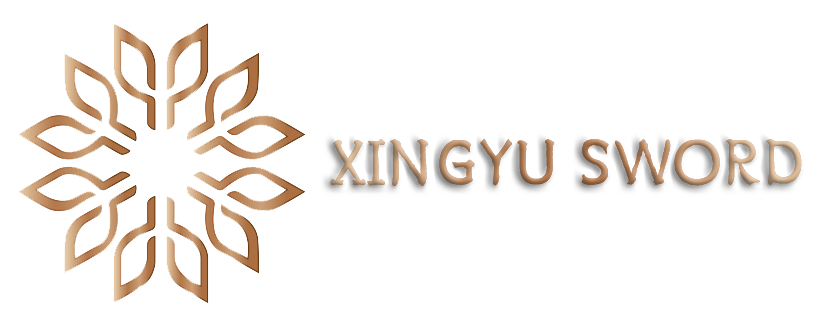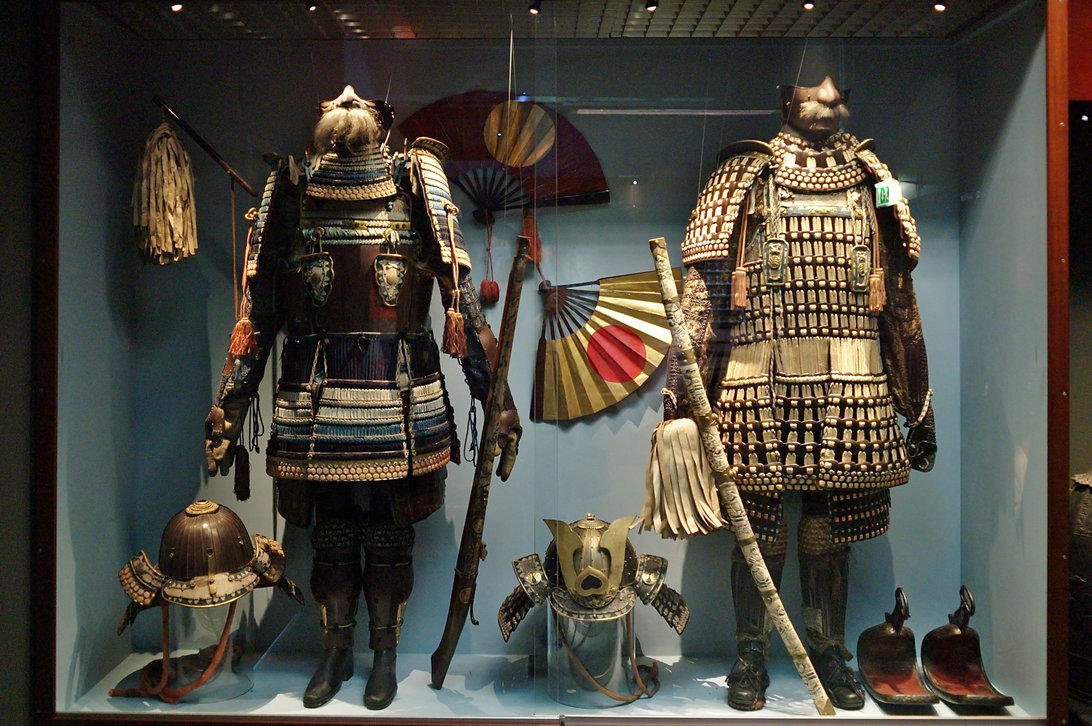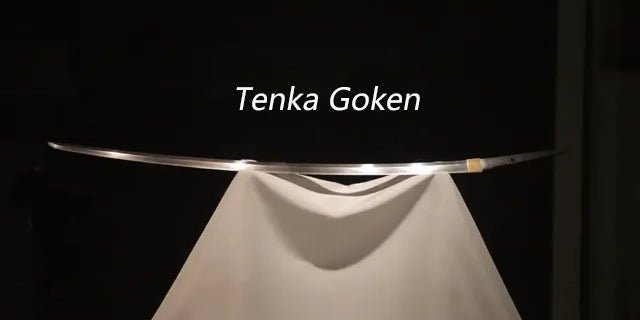Katana craftsman : Main sword craftsmen and schools
In addition to the leading edge of craftsmanship, the unique curved moon-shaped design of Japanese swords is also why are Japanese swords so strong. First of all, the curvature of the sword itself is in accordance with the principles of engineering design and physics, so that the sword can be held in both hands at different angles to show the cutting ability.As part of Japan's cultural heritage, what are some of the best swordsmiths that have appeared in Japan?
Actually every decade and region in Japan has its own style of sword forging. There are at least 33,000 swordsmiths whose names have been written in various records up to just before the beginning of the modern era. This page lists the most important of these swordsmiths and schools by era and region.
KOTO period (1000-1600)
Sagami:438Nominiert der Messer
redirected from Shintogo Kunimitsu
Yukimitsu
Masamune
Sadamune
Yamato:1025 craftsmen who decorated with Sword.
Amakuni
Senjuin Nobuyoshi
Nagaoshi
Tegai Kanenaga
Taima Genre decorated with Sword architects
Yamashiro: Name of 847 craftsmen who decorated with Sword.
Sanjo Munechika
Awataguchi Kuni tomo
Norikuni
Hisakuni,Kunitsuna
Yoshimitsu
Rai kuniyuki,Kunitoshi
Kunimitsu,Kunitsugu
Tomokuni
Ayanokoji Sadatoshi
Hasebe Kunishige,Kuninobu
Bizen: the name of 4005 craftsmen who decorated with Sword.
Ko-Bizen Tomonani
Kanehira
Fukuoka Ichimoni Norimune
Sukemune,Moritoshi,
Yoshifusa
Osafune Mitsutu
Nagamitsu,Kagemitsu,
Saksa da Sakesada
Bitchu: Name of 933 Sword-decorated craftsmen
AOE:Genre decorated with Sword architects
Bingo:565 Name of 565 Sword artisans.
Mihara Genre as Sword Architect
Mino: Name of 1,269 craftsmen who decorated with Sword.
Shizu Kaneui,Kanemoto
Kanesada
efchu: name of 256 craftsmen who decorated with Sword.
Go Yoshihiro, Norway
Issey: Names of 57 artisans who decorated Sword.
Muramassa
Chikutzen: Names of 277 Sword Artisans
Decorate Samonji
Higo: the names of 247 craftsmen who decorated with Sword.
Sasuma: Name of 587 craftsmen who decorated with Sword
Author: Naminohira Yukiyasu
Ivami: Names of 270 Sword artisans
About Naotsuna
Hoki: Names of 269 Sword-decorated craftsmen
About Yasutsuna
Decorate Shinto period (1600-1700)
Musashi: Name of 463 craftsmen who decorated with Sword
Author: Kotetsu Ishido Korekazu
Yamashiro: Name of 295 craftsmen who decorated with Sword.
Decorate Kunihiro
Setsu: Names of 380 artisans decorated with Sword
Address: Sukehiro, Tadatsuna,Kunisada
Shinkai, Kinmichi
Sasuma: Names of 185 craftsmen who decorated with Sword
Decorate Masakiyo
Hasen: Names of 245 craftsmen who decorated with Sword
Authors: Tadayoshi, Tadahiro,
Mathus: Names of 299 craftsmen who decorated with Sword.
Kunikane
Shin-Shinto period (1790-1876)
Musashi: the names of 373 craftsmen who decorated Sword.
Masahide,Munetsugu
Kiyomaro
Setsu: Names of 295 artisans decorated with Sword
Gasan
Matsu: Names of 295 craftsmen who decorated with Sword
Canada
Tosa: Names of 113 Sword artisans
Decorate Hideyuki
Byzantium: the names of 46 craftsmen who decorated with Sword
Decorate Sukenaga
Sasuma: Names of 116 craftsmen who decorated with Sword
About Motohira
Gokaden - The 5 main schools of Japanese sword smithing
From the end of the Kamakura period in 1333 through the entire Southern and Northern Dynasties (1331-1392), five traditional sword forging schools developed in Japan, namely Bizen Den (centered around the present-day Hajime Okayama Belt), Soshu Den (Kamakura), Yamashiro Den (Kyoto), Yamato Den (Nara), and Mino Den (near present-day Nagoya). These five traditional forging schools, collectively called "The Gokaden", were the major sword forging centers in the late Kamakura period and the Southern and Northern Dynasties. All five schools developed highly efficient actual combat swords, and Japan has different characteristics. For example, the swords produced by each school have their own unique blade, shape, hilt, and other details. The Gokaden maintained a profound influence until the early Muromachi era (1336-1573 AD).
The Gokaden consolidated the technology and design of the Japanese sword, and today's Japanese sword enthusiasts still try their best to acquire a Gokaden sword. However, only a small portion of the existing Japanese swords were made by the Gokaden, and only a few of them can be considered as models for the Gokaden's works.
These swords were all made during the period of frequent wars. Due to their frequent use, many swords have not been preserved in modern times. In the early Muromachi period, there may have been more than 100 daimyo (lords with their own territories), and the daimyo supported the sword forging industry. As a result, Gokaden swordsmiths were scattered throughout Japan, and their own schools of sword forging were established in various countries. Although many of these branches bear obvious similarities to the original Gokaden, later swordsmiths gradually developed their own styles and skills, giving their works unique characteristics.
When modern collectors receive jokoto, they often want to know whether (a sword made between the 13th and 16th centuries A.D.) can be classified as one of the biographies of the Gokaden. Although there are Gokaden swords, most of the jokoto that ordinary people can see are made in other parts of Japan. Perhaps only one tenth of all jokoto today can clearly identify the works of The Gokaden. Nevertheless, The Gokaden's sword still sets the standard for the identification, appreciation, and comparison of Japanese swords today.
Bizen-den
Swords in the Bizen tradition have been made since the late
period to the present day. The most prolific tradition in terms of
of swordsmiths and swords, the Bizen province is known as the Mecca of
of sword making. Bizen Province was rich in local materials such as sand iron and pine trees for charcoal.
and pine trees for charcoal. In the Koto period, there were a number of schools
centered around the village of Osafune and competed with each other.
Characteristics
The main characteristic of bizen work is an extravagant, nioi-deki,
overlapping choji (clove blossom) hamon, and a prominent misty utsuri in the blade.
in the blade.
Soshu den
During the Kamakura period, the military government invited the best blacksmiths
from all over the country to Kamakura. Eventually the master smith
Masamune perfected the characteristic Soshu style.
Characteristics
The blades are ambitiously crafted. They have an itame-hada
with a notare-gunome hamon, exquisite nie, chikei, kinsuji in the ji and
the ha. Soshu-den had a great influence on the other traditions.
Yamashiro-den
The Yamashiro tradition reached its peak during the late Heian period.
to the late Kamakura period. The main schools were the Sanjo, Gojo,
Awataguchi and Rai schools. Many of their works have an elegance that
that reflects their proximity to the imperial court.
Characteristics
The blades have a well-forged ko-itame hada with a beautiful shiny jigane.
The hamon is usually suguha-based with ko-midare and ko-choji, with fine ko-
nie in both the ji and ha.
Yamato-den
The Yamato tradition is considered to be the origin of all traditions and therefore the oldest.
and therefore the oldest. However, the earliest surviving verified signed work dates from the early
to the early Kamakura period. There are five schools within the tradition: the
Senjuin, Tegai, Taima, Shikkake and Hosho schools. The schools have strong
with the temples in Nara. The style is rather strict.
Characteristics
Blades have a high shinogi and masame can be seen in the hada.
The hamon are often nie-deki, suguha and sunagashi, niju-ba kuichigai-ba.
activities are often seen.
Mino-den
Of the five traditions, Mino-den was the last to emerge and was most active between the
between the Nanbokucho period and the late Muromachi period.
Characteristics
The hada tends to be itame mixed with masame. The jigane has shirake
(the steel has a whiteness). The hamon are gunome or prominent
pointed togari-ba. Many Shinto works contain Minoan features.
The city of Seki, which was the center of Mino production during the Muromachi
still thrives today as a producer of swords, knives, and sharp tools.
tools.
Main Points of the Gokaden





Leave a comment
This site is protected by hCaptcha and the hCaptcha Privacy Policy and Terms of Service apply.